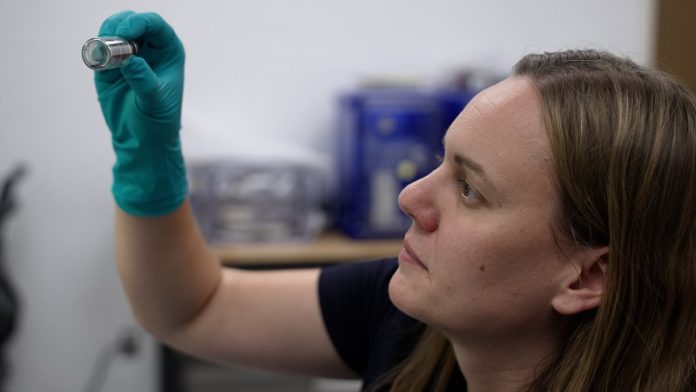
Asteroid Bennu, the focus of NASA’s OSIRIS-REx mission, has turned out to be far more than just a space rock.
Samples recently brought back to Earth in 2023 reveal that Bennu is a true time capsule, carrying materials that stretch across both time and space.
These tiny fragments record not only the birth of our solar system more than 4.5 billion years ago but also the changes that Bennu and its parent body have undergone ever since.
Three new studies published in Nature Astronomy and Nature Geoscience have provided the clearest picture yet of Bennu’s long history.
The analysis is being coordinated by the University of Arizona’s Lunar and Planetary Laboratory, with scientists worldwide contributing to the effort.
Bennu itself is not an original body. It formed from the remains of a much larger parent asteroid that broke apart after colliding with another asteroid, probably in the asteroid belt between Mars and Jupiter.
This parent asteroid was made of material that came from across the solar system—some from near the sun, some from the outer reaches beyond Jupiter and Saturn, and even grains of stardust that predate the formation of the solar system.
Over billions of years, fragments reassembled into new bodies, one of which eventually became Bennu.
Jessica Barnes, an associate professor at the University of Arizona and co-lead author of one of the studies, says that the samples are providing insights that telescopes alone could never reveal.
Among the most exciting discoveries are tiny grains of stardust, recognizable by their unusual chemical fingerprints.
These grains came from stars that exploded long before our solar system formed. Mixed in with them are organic materials with isotopes suggesting they were created in interstellar space, as well as minerals formed close to the sun.
For the first time, scientists can confirm that all these building blocks exist together in a single asteroid.
The discoveries also point to similarities between Bennu and another asteroid, Ryugu, sampled by Japan’s Hayabusa2 mission in 2019. Both appear to be among the most chemically primitive objects in the solar system.
Yet the subtle differences between them may suggest that the raw materials in their birth region were less evenly mixed than scientists once believed.
The second paper focused on how Bennu’s materials were altered by water. Bennu’s parent asteroid likely contained large amounts of ice that melted as heat built up inside the rock. That heat could have come from radioactive decay, leftover energy from its formation, or later impacts.
As the ice melted, liquid water interacted with the surrounding minerals, reshaping them in chemical reactions.
The researchers found that about 80% of Bennu’s minerals still contain water locked inside, evidence of these ancient hydrothermal processes. Remarkably, these reactions took place at mild temperatures of around 25 degrees Celsius—room temperature by Earth standards—creating conditions where complex chemistry could unfold.
But Bennu’s transformation did not stop billions of years ago. A third paper reports signs of space weathering that continue to shape the asteroid’s surface today. Microscopic craters and glassy splashes of melted rock mark the surfaces of Bennu’s particles, evidence that the asteroid has been constantly bombarded by tiny meteoroids.
On top of that, the relentless blast of solar wind has been altering Bennu’s outer layers. Researchers found that this weathering is happening much faster than previously thought, highlighting how active even “quiet” asteroids can be.
Asteroids like Bennu are vital to science because they preserve a record of solar system history that meteorites on Earth cannot always provide.
Meteorites that fall to Earth may burn up in the atmosphere, and those that survive often change chemically once they land. By directly collecting samples in space and bringing them back untouched, OSIRIS-REx has given scientists the chance to study materials in their most pristine form.
As Tom Zega, director of the Kuiper-Arizona Laboratory, explains, Bennu is showing us how water, heat, impacts, and space itself transformed the earliest building blocks of planets.
The asteroid’s story is not just about one rock drifting in space—it is about the evolution of our entire solar system.
Thanks to these samples, scientists can now trace the history of materials that witnessed the birth of planets, the explosion of ancient stars, and the chemistry that may one day help explain the origins of life.



